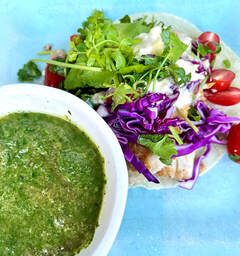
When unprocessed, sugar contains a variety of vitamins, minerals, enzymes and proteins. For example, when brown rice or other whole grains are cooked, chewed and digested, the natural carbohydrates break down uniformly into separate glucose molecules. These molecules enter the bloodstream, where they are burned smoothly and evenly, allowing your body to absorb all the good stuff.
Refined table sugar, also called sucrose, is very different. Extracted from either sugar cane or beets, it lacks vitamins, minerals and fiber, and thus requires extra effort from the body to digest. The body must deplete its own store of minerals and enzymes to absorb sucrose properly. Therefore, instead of providing the body with nutrition, it creates deficiency. It enters swiftly into the bloodstream and wreaks havoc on your blood sugar level, first pushing it sky-high—causing excitability, nervous tension and hyperactivity—and then dropping it extremely low—causing fatigue, depression, irritability, weariness and exhaustion.
Sugar qualifies as an addictive substance for two reasons:
- Eating even a small amount creates a desire for more.
- Suddenly quitting causes withdrawal symptoms such as headaches, mood swings, cravings and fatigue.
Did you know you will find sugar hidden in canned vegetables, baby food, cereals, peanut butter, bread, condiments and tomato sauce? It is often disguised in fancy language such as corn syrup, dextrose, maltose, glucose or fructose. Even some "healthy foods" contain sugar: a lemon poppy seed Clif Bar has 21 grams of sugar, or 5 teaspoons. Compare that to a chocolate-glazed cake donut from Dunkin’ Donuts, which has 14 grams of sugar, or 3 teaspoons. You may think your afternoon cup of coffee only has a little sugar, but a 16-ounce Starbucks Frappuccino actually contains 44 grams of sugar, or 10 teaspoons—that’s like eating three donuts! Overconsumption of refined sweets and added sugars found in everyday foods has led to an explosion of hypoglycemia, insulin resistance and type 2 diabetes.
The American Heart Association recommends that women consume no more than 24 grams of added sugar daily or 6 teaspoons; for men 37.5 grams or 9 teaspoons. That's a pretty generous guideline. Here's how to begin to heal from the effects of an overly-sweetened, inflammatory diet:
- choose real, whole foods instead of processed
- eat protein + healthy fat + complex carbs at each meal to keep blood sugar stable
- ditch fruit juices which, without the fiber of whole fruit, spikes blood sugar
- enjoy the sweetness of summer fruits, especially berries which have the lowest impact on blood sugar
- cut back on desserts and snacks with refined sugar
- choose baked goods and recipes made with natural sweeteners such as maple syrup and coconut sugar
- check nutrition labels for ingredients checking for sneaky added sugars
- check nutrition labels for grams of added sugar
EASY BREEZY SUMMER DINNER:
GREENS SOUP AND MILLET-CRUSTED FISH TACOS
Serves 4
Print recipe
For the soup:
2 T olive oil
1 onion, chopped
1 zucchini, cubed
1/2 cup white wine
4 c vegetable broth
2 t salt
16 ounces fresh greens such as spinach leaves or mixed "super greens"
1 bunch basil or tarragon
Pour the olive oil into a large pot. Add the onions and sauté over medium high heat until softened, about 5 minutes. Add the zucchini to the pot and, stirring occasionally, cook until lightly browned, about 3-5 minutes. Add the wine and cook until simmering, about 3 minutes. Add the broth and salt. Bring to a boil. Then turn off the heat and quickly add the greens and herbs. Stir until wilted. Use an immersion blender to blend soup in the pot until smooth, or transfer soup to a blender in batches, and blend until smooth.
For the tacos:
2 T olive oil
1 cup millet flour
1/2 t salt
freshly cracked pepper to taste
1 t smoked paprika
16 ounces Pacific cod filets, or other favorite white fish
Dijon mustard
8 almond tortillas or favorite tortillas, lightly warmed
red cabbage, sliced thinly
1 avocado, cubed
cherry tomatoes sliced in half
cilantro
For the sauce:
1/2 c mayonnaise
hot sauce to taste
juice of 1 lime
Preheat oven to 400 degrees. Pour and spread olive oil onto a sheet pan. On a large plate, combine flour, salt, pepper and smoked paprika and stir well. Meanwhile spread Dijon mustard over top and bottom of the fish filets. Dip filets into flour to coat. Shake off excess, and place onto sheet pan. Bake for about 12 minutes or until cooked through and flaky.
Create tacos by stacking fish onto tortillas and adding cabbage, avocado, tomatoes and cilantro. Top with sauce: Make sauce by combining mayo with your favorite hot sauce and lime juice. Stir well. Enjoy!
